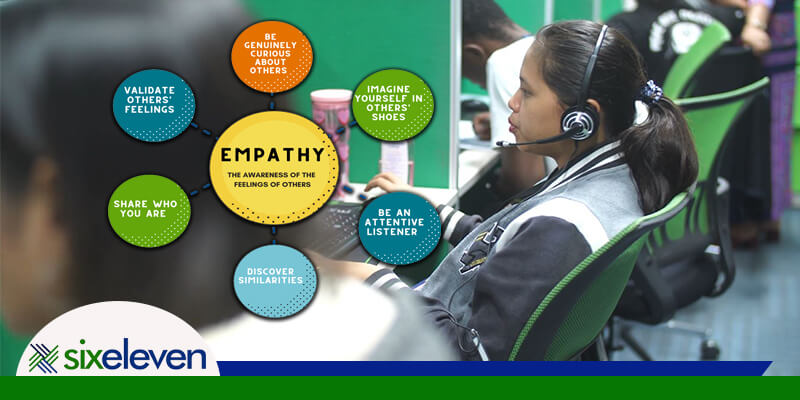Navigating Choppy Water: How to Effectively Contact an Angry Client
Crossed arms, heavy sighs, and brief responses are some signals that your client is losing interest in what you’re saying , and your chances of retaining their business are dwindling rapidly.
Dealing with clients can be likened to sailing through stormy seas in the business world. While most contacts are pleasant, you may encounter an angry customer on occasion, these situations might be difficult, but they also provide an opportunity to demonstrate your excellent customer service skills. In this blog, we’ll look at how to contact an angry customer and reverse the tide in your favor.
GET FREE QUOTE
Send us your requirements and we will get back shortly.
Demanding customers or even hostile are not always expressing their displeasure with you; the external conditions and psychological inputs link to these emotions. So, use your outstanding communication skills, your superpower of assessing the situation, and these eight psychological tactics for dealing with problematic consumers to keep your customers from leaving.
1. Remain Calm and Objective
Disdaining or disrespecting someone can reflect adversely on you and your company, so reputation management should always be top of mind.
It’s critical to keep your cool when dealing with an upset customer. Emotions can be strong on both sides, but responding calmly and objectively can help diffuse tension. Address the client’s worries without becoming defensive, and address them with understanding. Remember that your goal is to find a solution rather than to worsen the problem.
Remember that others frequently mirror your emotional messages. If you answer with animosity and rage, don’t expect to be met with kindness and understanding.
2. Choose the Right Communication Channel
It is critical to choose the best communication medium. While email and chat allow you to design your response carefully, a phone call may add a more personal touch. An in-person meeting may be necessary to fully grasp the client’s issues and demonstrate your dedication to addressing the issue.
3. Act Promptly
When dealing with an angry client, time is of the essence. Respond quickly to demonstrate that you are concerned about their issues. Delaying a response may aggravate their dissatisfaction and result in a breakdown in communication.
Even if you work in customer service and regularly deal with upset customers, maintaining mental equilibrium will allow you to refresh your thoughts and deal with your next customer just as successfully. Speak with a friend, take some deep breaths to relax, or do a brief stroll to clear your mind before returning to your chores.
4. Listen Actively
Active listening is required for effective communication. Allow the client to thoroughly articulate their worries before reacting. Do not interrupt or make assumptions. Note of the precise difficulties they bring up since they will direct your efforts to find a solution.
Also, make use of reflective listening. It necessitates interpreting the other person’s words and body language to comprehend what they are saying. After you’ve studied the scenario, you respond by reflecting to your customer the thoughts and sentiments you heard.
5. Empathize and Validate
Empathize with the client’s emotions and problems. Recognize their feelings without assigning blame. Using comments such as “I understand how frustrating this situation must be” or “I’m sorry you’ve had this experience” might assist their emotions and create a more conducive environment for problem-solving.
Demonstrate that you understand why they are upset, and attempt to put yourself in their shoes to see how you would react in a similar circumstance; this may put you in a better state of mind to come up with a solution. Express that you apologize unequivocally.
Get 2021 Outsourcing Guide
Find out how SixEleven can help you with outsourcing
6. Apologize Sincerely
Customers can detect when they are patronized or furious, so make sure your word choice and tone are intentional and courteous. Nobody enjoys being talked down to, so even if the client arrives agitated or with a raised voice, take the high road to alleviate tension and make the consumer feel taken seriously.
A heartfelt apology might help to relieve stress. If your company is to blame, accept responsibility and apologize for the inconvenience. Even if the issue happened because of external events, expressing regret for the client’s poor experience is an essential in restoring confidence.
7. Offer a Solution
Provide a clear and viable solution to the client’s problems. Prepare an overview of the steps you will take to correct the situation. Offer more than one solution to present options and demonstrate your dedication to finding a solution that works for them.
Chunking is the process of dividing a large problem into multiple smaller, more manageable pieces. These small chunks are easier for us to handle, making us more inclined to start dealing with the problems. Many people use chunking to arrange their everyday work or to solve hard challenges.
8. Follow Up and Follow Through
Unresolvable issues with a single phone call may necessitate consulting with your boss or submitting an internal request to the product team. If this is the situation, explain to the client why you cannot resolve the issue over the phone and instead provide a schedule for when they can expect to hear from you again.
Following the presentation of a solution, follow up with the client to confirm that their issues have been adequately handled. Keep your promises and take the required steps to solve them into effect. Regular contact throughout the settlement process might indicate your commitment to fixing the problem; this has the added benefit of giving the customer time to calm down and giving you time to obtain guidance and comments from your management on how to proceed.
9. Learn and Improve
Every connection, even the most difficult, provides an opportunity to learn and grow. After the situation is resolved, take the time to examine what went wrong and identify strategies to avoid similar problems in the future. This proactive strategy demonstrates your dedication to continual improvement and customer happiness.
𝘼𝙣𝙜𝙚𝙧 𝙞𝙨 𝙖 𝙣𝙖𝙩𝙪𝙧𝙖𝙡 𝙛𝙚𝙚𝙡𝙞𝙣𝙜, 𝙗𝙪𝙩 𝙮𝙤𝙪 𝙘𝙖𝙣 𝙝𝙖𝙣𝙙𝙡𝙚 𝙖𝙣𝙜𝙧𝙮 𝙤𝙧 𝙙𝙞𝙛𝙛𝙞𝙘𝙪𝙡𝙩 𝙘𝙤𝙣𝙨𝙪𝙢𝙚𝙧𝙨 𝙞𝙣 𝙖𝙣𝙮 𝙨𝙞𝙩𝙪𝙖𝙩𝙞𝙤𝙣 𝙗𝙮 𝙖𝙘𝙩𝙞𝙫𝙚𝙡𝙮 𝙡𝙞𝙨𝙩𝙚𝙣𝙞𝙣𝙜, 𝙗𝙚𝙞𝙣𝙜 𝙩𝙧𝙪𝙩𝙝𝙛𝙪𝙡, 𝙢𝙖𝙞𝙣𝙩𝙖𝙞𝙣𝙞𝙣𝙜 𝙘𝙖𝙡𝙢, 𝙝𝙖𝙫𝙞𝙣𝙜 𝙛𝙤𝙡𝙡𝙤𝙬-𝙪𝙥 𝙩𝙞𝙢𝙚𝙨, 𝙖𝙣𝙙 𝙚𝙢𝙥𝙝𝙖𝙨𝙞𝙯𝙞𝙣𝙜 𝙖 𝙘𝙪𝙨𝙩𝙤𝙢𝙚𝙧’𝙨 𝙘𝙖𝙪𝙨𝙚.
Contacting an angry customer may appear to be scary, but with the appropriate attitude, it can be an opportunity to demonstrate your customer service skills. Remember to stay calm, empathic, and solution-oriented. You may turn a potentially unpleasant experience into a positive one and develop client relationships by successfully addressing their problems and delivering an acceptable resolution.
Using rage as a bargaining tool with your consumer to get the best results for a circumstance might improve your business’s rapport. Dealing with dissatisfied consumers is never simple. Despite the hassles, furious consumers are wonderful for business if you know how to communicate with them and meet their demands.
GET FREE QUOTE
Send us your requirements and we will get back shortly.
#HowToContactAnAngryClient
#SixElevenGlobalServices




